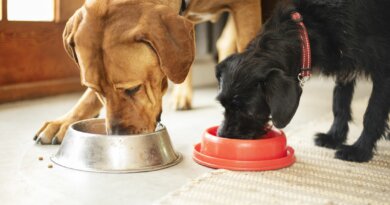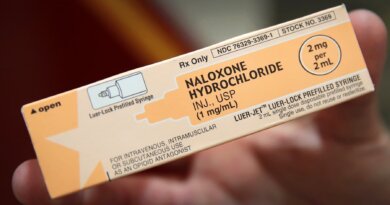A Science-based Guide on Feeding
The aim of an appropriate nutritional plan for athletic dogs is to maximize performance and minimize the occurrence of injuries. To assess the best dog food for athletic dogs, it’s essential to look at the individual animal’s history, body condition and exercise routine. The intensity and duration of work will determine the ideal diet composition (1, 2).
In this article, I will walk you through the main considerations for proper dog nutrition for athletic dogs and working dogs, and how most canine athletes are fed by professionals to optimize their performance.
Before you pick the new diet plan, performance food, or go looking for the best dog food for active dogs, you must assess your pet, his current condition and look at several important factors.
Which Dogs are “Athletic Dogs”?
Before adjusting your dog’s diet, you need to be sure your pet actually needs that. But how do you know if your dog is considered an athlete or working dog that needs a special dietary plan?
The New York Times spoke with Dr. Joseph Wakshlag, a professor of clinical nutrition and sports medicine at Cornell University College of Veterinary Medicine about this very subject. Dr. Wakshlag said that all athletes – runners, lifters, sprinters, etc – have different nutritional requirements, and we must look at athletic dogs in a similar way:
“On the one hand, you have earthdogs — the dachshunds and such — designed for fast, short sprints, and then there are sled dogs that run 50 miles or more. Your typical running companion would be somewhere in between.”
A good rule of thumb is that if you expect your dog to perform some strenuous exercise such as consistent running for more than 30 minutes continuously, then this dog can be considered an athlete and a special diet is needed. This “special” diet for athletic dogs will boost the dog’s performance, improve recovery time and help prevent injuries.
Structuring a Diet for Athletic Dogs
Understanding an athletic dog’s needs and use of energy sources, vitamins and minerals is essential to provide the right nutritional balance. If performance and injury prevention is important, then picking the best dog food for athletic dogs will not be a simple task.
Several studies, such as 2016 one and 2014 one, have taken an extensive look at the relationship between a diet and physical performance in dogs. Below, I will extrapolate available scientific data to look at the best practices of how to feed athletic dogs. But it’s still crucial for owners to work with a trained specialist on nutrition for athletic dogs to make the best dietary plan.
Your veterinarian is a good place to start, but dogs that compete in athletics should work with a certified canine nutritionist that specializes in that field and knows about nutrition of athletic dogs. They’ll create the best nutritional plan for the dog body’s needs.
Adding extra strenuous exercise to a dog’s life makes it even more difficult to know exactly what that dog’s diet should be because it requires you to measure how much energy the dog exerts and how many calories are burned (3). That’s where only a qualified and trained specialist can help.
Important Dietary Elements for Athletic Dogs
First, let’s take a look at the most important nutrients that are absolutely vital to athletic dogs and must always be present in sufficient amounts in your performance dog diet.
Phosphocreatine
Phosphocreatine is a molecule that’s utilized well in work that requires short, explosive bursts of power from the dog’s body. It is present in muscle tissue.
Although phosphocreatine is not an energy source in itself, what it does is converts adenosine diphosphate (ADP) into adenosine triphosphate (ATP) which allows it to be used for muscle contraction by your canine.
Studies in exercising dogs have observed (4) how this anaerobic process provides maximum power for up to 10 seconds, making it essential for intense, short lasting work such as weight pulling or sprints by your dog.
Carbohydrates
Pet owners of “regular” dogs are usually not big fans of grains and carbohydrates in general, but veterinarians warn that grain-full diet can actually be useful. Moreover, for athletic dogs in particular, carbohydrates can be even more important in several ways.
Glycogen is a carbohydrate stored in the muscle in the dog’s body, and used in the initial moments of muscle activity (5). The break down time is half of that derived from phosphocreatine, and it lasts up to 30 seconds.
The depletion is rapid though, and can quickly lead to muscle fatigue and weakness. Studies with sled dogs have observed (6) that post-exercise carbohydrate intake provide a more rapid and complete recovery, which helps the dogs to perform well the next time.
Glucose is replenished much faster than glycogen, but as it circulates the blood, it must be moved into the muscle cells through an insulin mediated process in order to be used. This provides energy that lasts from 30 seconds up to a few minutes (7).
These are both used as the predominant fuels by canine athletes in most sports and activities that require the athletic dog to perform many bursts of energy.
When feeding dog athletes sufficient amount of carbohydrates, it’s essential that they are provided in a highly digestible form. Increased fecal bulk due to undigested carbohydrates and subsequent increased water loss, colonic gas and added weight has been shown to affect performance and slow racing speed in athletes (8).
Protein
High amount of protein is what most dog owners are after, and rightfully so. Protein promotes the increase of muscle tissue and facilitates the formation of new muscle, while having a restorative effect on damaged muscle and connective tissue in athletic dogs (9).
Amino acids that come from consuming protein are an essential part of a dog’s diet, making up 5-15% of the energy used by the athlete during physical exertion (10). The types of amino acids vary, but most important ones are leucine, isoleucine and valine.
These three amino acids must be provided in your athletic dog’s diet to boost performance, prevent muscle injury and speed up recovery time. Ideal sources of high quality protein are muscle and organ meats, which provide excellent bio-availability and are highly digestible (11). This reduces fecal bulk and maximizes dog’s performance.
In specific groups of working dogs, studies have shown (12) that lower carbohydrate and higher protein diet are more beneficial due to better glycemic control.
This makes it an essential component in any canine’s diet but even more so in the diet for athletic dogs, especially when taking into account the importance of minimizing injury (13).
It is important to note that protein should be used as a source of tissue support, rather than energy, while carbohydrates and fats provide the majority of fuel for the muscles. Over-feeding of protein is not good and it may cause excessive amino acid catabolism.
Fats
Canines differ from humans in the sense that they rely on free fatty acids for muscle fuel at all exercise levels, which is why very low carbohydrate diets work for most dogs.
In endurance and intermediate athletic dogs, a high fat diet allows the muscles to mobilize and use free fatty acids for energy while the glycogen sparing effect of fat also helps to prolong the use of glycogen during physical activity (14).
Some studies suggest (15) that 66% of energy from dietary fat in the athletic canine’s diet is superior to lower 44% of energy from dietary fat. Other studies suggest (16) that the numbers are slightly different. However, the conclusion is that fats are essential for athletic dogs.
RELATED: Can Dogs Go Vegan?
Feeding Specific Types of Athletic Dogs
Once again, same as with the nutrients in the athletic dog’s diet, the actual process and structure of feeding canine athletes depends on individual dogs and what they do.
Sprint Athletes

Some studies suggested that dietary carbohydrates should be the main source of energy, as metabolism of glucose and glycogen (PDF) provide the most relevant energy. However, further research into this has shown something different.
Better designed study observed (17) that greyhounds a lower carbohydrate content with high protein and high fat content performed best. The diet for these dogs should be high fat and high protein, with low amount of carbohydrates (approx. 40/40/20 breakdown).
Nutrition for sprinting athletic dogs must be provided in a combination of dry food and meat. For example, some handlers feed a carbohydrate-based meal in the morning and meat and vegetable meal in the evening. However, based on the more recent data discussed above, it seems like post-exercise carbohydrate intake is the best approach.
Contrary to popular belief, large amounts of sugars (carbohydrates) should not be fed immediately prior to races or as a pre-race snack. The risk of rebound hyperinsulinemia, hypoglyceamaea and increased earlier onset of muscle fatigue may result. A small amount of glucose (15g) or honey (60ml) 4 to 6 hours prior to the race may be beneficial.
Intermediate Athletes
Examples of intermediate canine athletes include search and rescue dogs, many types of working dogs, service dogs and guide dogs.
In fact, most canine athletes are considered intermediate athletes. The intensity can be low to moderate and may last a few hours with these athletic or working dogs.
In cases of part-time athletic dogs, it is important to adjust the dietary intake during the off-season. During the on-season period the dietary recommendations can be highly variable. It is important to carefully monitor your canine athlete’s body condition and particularly dietary fat needs as your dog’s workload increases.
The intermediate athletes like service and working dogs perform best on a high fat diet, according to studies (18), with 70-90% of their energy being sourced from fat metabolism. These canines use both fast and slow-twitch muscles.
Fast twitch muscles are able to metabolize using both aerobic and anaerobic pathways, utilizing glycogen and glucose for immediate, short bursts of energy and fat for longer, sustained energy. Slow-twitch fiber muscles utilize fat for energy due to their increased capacity for aerobic metabolism.
Endurance Athletes

These athletic dogs require very high levels of dietary fat to serve as the primary source of fuel for exhaustive forms of exercise that require long-lasting energy.
The above mentioned studies as well as further research (19) indicates that a high fat diet increases endurance capacity and maximizes energy production in athletic dogs.
When fed high fat diets (53-67% of energy) these dogs were able to run for 20 miles before reaching exhaustion, compared for 15 miles when fed moderate amount of dietary fat (29% of energy) diet.
High fat diets also allow nitrogen excretion to be reduced, minimizing fecal volume and water loss, and reducing the heat of digestion compared to that of carb breakdown. This allows for lower temperature regulation and dog comfort when working in the heat.
Fat adaptation was shown (20) to be an effective strategy in improving performance in these canine athletes. Providing adequate nutrition for athletic dogs is key in supporting them to reach optimal performance and maintain physical health.
Careful monitoring of your athletic dog’s body score and condition, performance and demeanor, and adjusting as needed will allow for the best overall outcome.
RELATED: Pit Bull Muscle Gaining 101
Vitamins & Minerals for Athletic Dogs
It is crucial to take into account the importance of vitamins and minerals in any dog’s diet but even more so in the canine athlete’s nutrition.
Although most commercial dog food brands have a carefully balanced amount of vitamins and minerals that is often sufficient for a “regular” household pet, canine athletes may have different needs and these dog foods are not sufficient in nutrients for them.
In endurance racing dogs, the food offered is likely to meet all requirements in vitamins and minerals due to the volume consumed. However, in sprint athletes, for example, which consume small amounts of food, supplementation may be necessary.
Observational studies found (21) that many handlers of athletic and performance dogs do indeed feed their dogs a homemade dog food diet which is also supplemented with vitamins, minerals, antioxidants and essential fatty acids.
Antioxidants such as Vitamins E and C may have a pharmacologic benefit during exercise of athletic dogs, inhibiting free radical production during rigorous exercise. Further research is needed to determine the ideal dose, however, so it’s important to monitor.
One of the most effective ways to increase your dogs performance and improve health of athletic dogs (and most dogs in general) is to supplement their diet with essential fatty acids. Omega-3s is found in fish oil supplements which can be added to homemade meals. There’s some evidence that omega-3 improves performance in sled dogs.
Further research has found omega-3s from fish oil reduces inflammation in dogs (22), as well as improve dogs’ cardiovascular health (23).
Best Dog Food for Athletic Dogs
As mentioned above, for any dog owner of a canine athlete that actively trains and competes in spots, it’s crucial to discuss the animal’s dietary plan with a veterinarian and/or canine nutritionist. However, there are some specialized dog food brands formulated specifically for athletic dogs. Below are some of the better brands.
Take Home Message
The evidence is clear that athletic dogs require a different diet from “regular” pets that mostly stay at home. There are several approaches to a canine athlete diet.
The most important things to consider is to feed athletic dogs the required nutrient content based on the type of work they do. Different athletes need different nutrition.
The most effective way to feed athletic dogs is find that particular pet’s nutritional requirements, and then feed him through a combination of commercial dog food and homemade dog food diet supplemented with vitamins, minerals and omega-3s.
READ NEXT: 9 Tips for Running with Dogs








